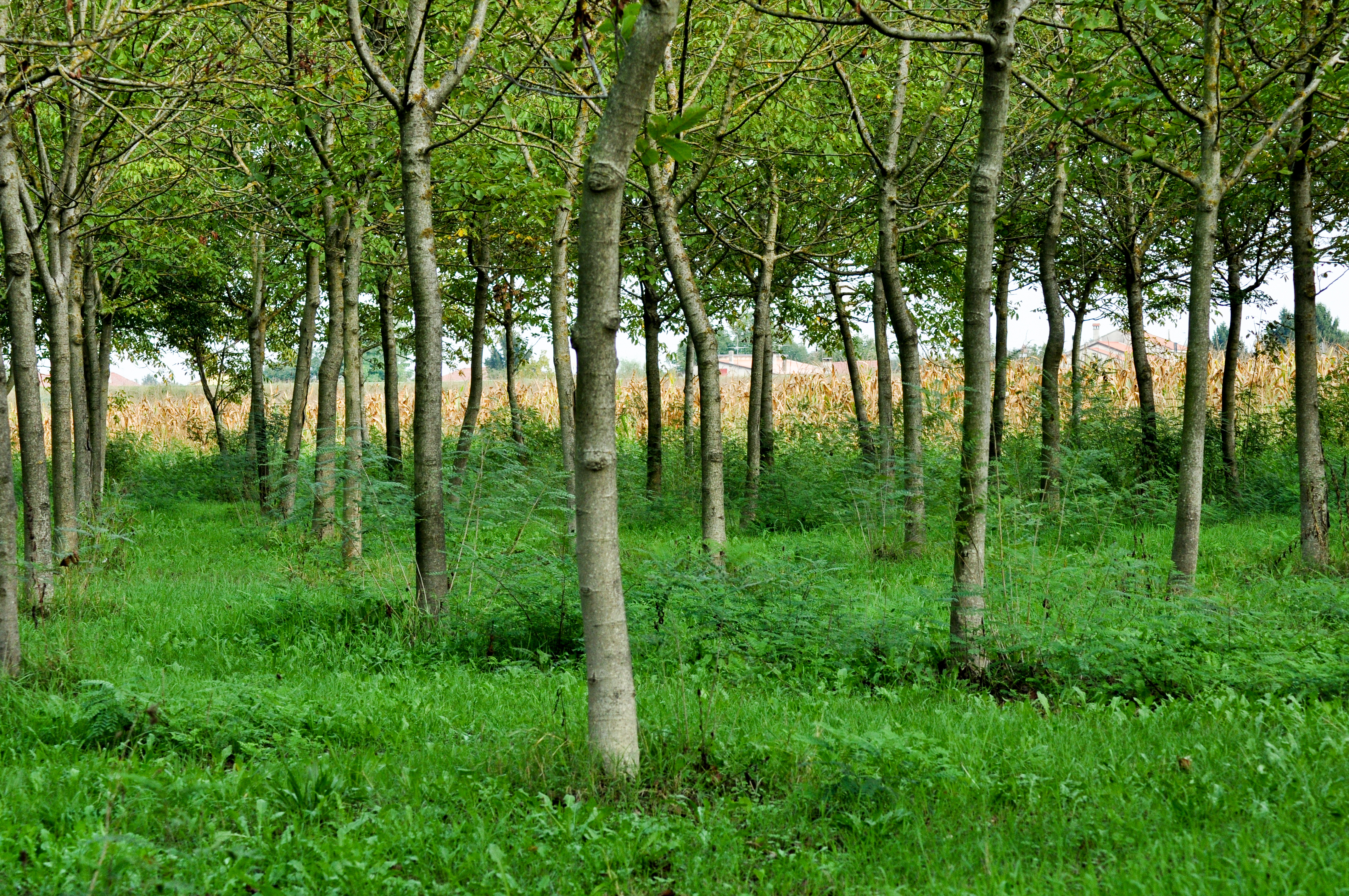The Properties of Walnut
Contents |
Introduction
Walnut trees are deciduous trees from temperate climates, with the European species being lighter than the American species. The distinguishable sapwood and heartwood can be between five to ten centimetres, and of grey or red-coloured stripes depending on location and wood age. Walnut trees are part of the plant genus Juglans.
Non-Juglans Walnut trees include Brazilian Walnut, African Walnut, Queensland Walnut, Caribbean Walnut, and New Guinea Walnut.
English Walnut
A variety of species of walnut can be used for wood carving and woodwork, but the most common are English Walnut and Black Walnut. English Walnut, or Juglans regia, is typically known as Common Walnut, and provides the majority of edible walnuts for human consumption.
Walnut wood is hard, heavy, and resilient, capable of resisting warping and suffering very little shrinkage. The grain is irregular but typically straight with a medium texture. The endgrain is semi-porous with distinct growth rings.
Although susceptible to insects, English Walnut is quite resistant to decay. While working with English Walnut wood, there is a slight odour. This wood doesn’t typically trigger allergies, but some skin and eye irritation can occur.
Related Walnut species include:
Black Walnut
With the scientific name of Juglans nigra, Black Walnut is a very popular and easy to find wood. A premium hardwood, it’s extremely easy to work with and popular with woodworkers in the United States. With its brown colour and shock resistance, Black Walnut is a strong hardwood that provides a great choice for any woodworking.
Its heartwood can either be a light brown colour or a dark chocolate brown, containing dark streaks. The sapwood is pale yellow, and the grain usually straight. Black Walnut has a medium texture and it’s extremely durable to decay, although it can be affected by insects.
When the grain is regular and straight, Black Walnut is very easy to work with; rarely stained, this wood sustains glue and finishes very well. Some tearout can happen with surfacing when the grain is irregular.
Similarly to English Walnut, Black Walnut can cause some eye and skin irritation.
Related Walnut species include:
Uses
As walnut wood is fairly easy to work with, it’s often utilised in carving, turning, and profiling, Its smooth surface allows for pieces to have a beautiful surface finish. Staining can occur when walnut wood is in contact with iron.
In addition, walnut wood can be used for flooring, solid wood or veneer for musical instruments and furniture, and interior decoration. Black Walnut is typically used for turned items, furniture, interior panelling, and cabinetry.
English Walnut can also be used for furniture, small wooden objects, and veneer.
--G&S Specialist Timber 16:26, 21 Apr 2017 (BST)
Related articles on Designing Buildings
- 11 things you didn't know about wood.
- Birch wood.
- Cedar.
- Chip carving.
- Cross-laminated timber.
- Definition of tree for planning purposes.
- Engineered bamboo.
- Glulam.
- Hardwood.
- Laminated veneer lumber LVL.
- Lime wood.
- Oak wood properties.
- Physical Properties of Wood.
- Pine wood.
- Plywood.
- Properties of Mahogany.
- Softwood.
- Testing timber.
- The differences between hardwood and softwood.
- Timber.
- Timber preservation.
- Timber vs wood.
- Types of timber.
- Veneer.
- Wood ash.
Featured articles and news
One of the most impressive Victorian architects. Book review.
RTPI leader to become new CIOB Chief Executive Officer
Dr Victoria Hills MRTPI, FICE to take over after Caroline Gumble’s departure.
Social and affordable housing, a long term plan for delivery
The “Delivering a Decade of Renewal for Social and Affordable Housing” strategy sets out future path.
A change to adoptive architecture
Effects of global weather warming on architectural detailing, material choice and human interaction.
The proposed publicly owned and backed subsidiary of Homes England, to facilitate new homes.
How big is the problem and what can we do to mitigate the effects?
Overheating guidance and tools for building designers
A number of cool guides to help with the heat.
The UK's Modern Industrial Strategy: A 10 year plan
Previous consultation criticism, current key elements and general support with some persisting reservations.
Building Safety Regulator reforms
New roles, new staff and a new fast track service pave the way for a single construction regulator.
Architectural Technologist CPDs and Communications
CIAT CPD… and how you can do it!
Cooling centres and cool spaces
Managing extreme heat in cities by directing the public to places for heat stress relief and water sources.
Winter gardens: A brief history and warm variations
Extending the season with glass in different forms and terms.
Restoring Great Yarmouth's Winter Gardens
Transforming one of the least sustainable constructions imaginable.
Construction Skills Mission Board launch sector drive
Newly formed government and industry collaboration set strategy for recruiting an additional 100,000 construction workers a year.
New Architects Code comes into effect in September 2025
ARB Architects Code of Conduct and Practice available with ongoing consultation regarding guidance.
Welsh Skills Body (Medr) launches ambitious plan
The new skills body brings together funding and regulation of tertiary education and research for the devolved nation.
Paul Gandy FCIOB announced as next CIOB President
Former Tilbury Douglas CEO takes helm.























